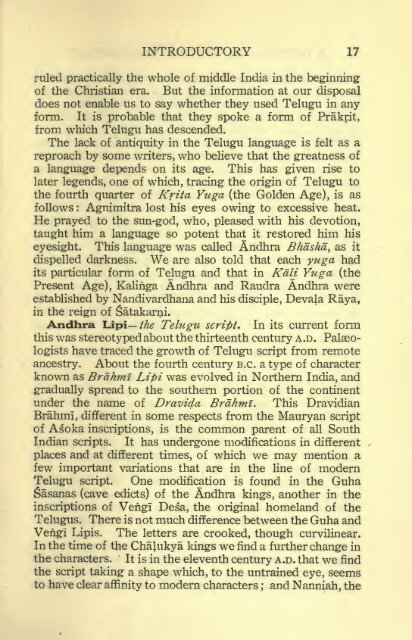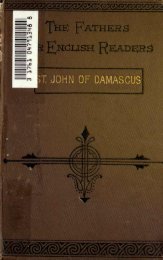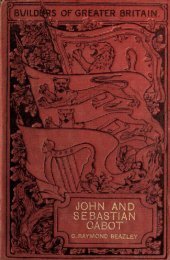A history of Telugu literature; - Cristo Raul
A history of Telugu literature; - Cristo Raul
A history of Telugu literature; - Cristo Raul
You also want an ePaper? Increase the reach of your titles
YUMPU automatically turns print PDFs into web optimized ePapers that Google loves.
INTRODUCTORY 17<br />
ruled practically the whole <strong>of</strong> middle India in the beginning<br />
<strong>of</strong> the Christian era. But the information at our disposal<br />
does not enable us to say whether they used <strong>Telugu</strong> in any<br />
form. It is probable that they spoke a form <strong>of</strong> Prakrit,<br />
from which <strong>Telugu</strong> has descended.<br />
The lack <strong>of</strong> antiquity in the <strong>Telugu</strong> language is felt as a<br />
reproach by some writers, who believe that the greatness <strong>of</strong><br />
a language depends on its age. This has given rise to<br />
later legends, one <strong>of</strong> which, tracing the origin <strong>of</strong> <strong>Telugu</strong> to<br />
the fourth quarter <strong>of</strong> Krita Yuga (the Golden Age), is as<br />
follows : Agnimitra lost his eyes owing to excessive heat.<br />
He prayed to the sun-god, who, pleased with his devotion,<br />
taught him a language so potent that it restored him his<br />
eyesight. This language was called Andhra Bkasha, as it<br />
dispelled darkness. We are also told that each yuga had<br />
its particular form <strong>of</strong> Tejugu and that in Kali Yuga (the<br />
Present Age), Kalinga Andhra and Raudra Andhra were<br />
established by Nandivardhana and his disciple, Devala Raya,<br />
in the reign <strong>of</strong> Satakarni.<br />
Andhra Lipi the <strong>Telugu</strong> script. In its current fonn<br />
this was stereotyped about the thirteenth century A.D. Palaeologists<br />
have traced the growth <strong>of</strong> <strong>Telugu</strong> script from remote<br />
ancestry.<br />
About the fourth century B.C. a type <strong>of</strong> character<br />
known as Brdhml Lipi was evolved in Northern India, and<br />
gradually spread to the southern portion <strong>of</strong> the continent<br />
under the name <strong>of</strong> Dravida Brdhml. This Dravidian<br />
Brahmi, different in some respects from the Mauryan script<br />
<strong>of</strong> Asoka inscriptions, is the common parent <strong>of</strong> all South<br />
Indian scripts. It has undergone modifications in different<br />
places and at different times, <strong>of</strong> which we may mention a<br />
few important variations that are in the line <strong>of</strong> modern<br />
<strong>Telugu</strong> script. One modification is found in the Guha<br />
Sasanas (cave edicts) <strong>of</strong> the Andhra kings, another in the<br />
inscriptions <strong>of</strong> Vengi Desa, the original homeland <strong>of</strong> the<br />
<strong>Telugu</strong>s. There is not much difference between the Guha and<br />
Verigi Lipis. The letters are crooked, though curvilinear.<br />
In the time <strong>of</strong> the Chalukya kings we find a further change in<br />
the characters. It is in the eleventh century A.D. that we find<br />
the script taking a shape which, to the untrained eye, seems<br />
to have clear affinity to modern characters and ; Nanniah, the

















